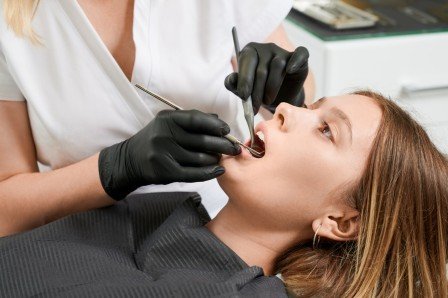Tooth Crowns for Front Teeth: Balancing Aesthetics and Functionality
A healthy, beautiful smile is one of the most noticeable features of the human face. When the front teeth are damaged, decayed, or discolored, it can dramatically affect both your appearance and confidence. Thankfully, modern dentistry offers a highly effective solution—tooth crowns for front teeth. These custom-designed restorations not only rebuild the tooth's structure but also recreate a natural, aesthetically pleasing look. But achieving the perfect balance between appearance and functionality requires expert planning, artistic precision, and the right materials.
Whether you've experienced trauma, decay, wear, or cosmetic imperfections in your front teeth, dental crowns provide a long-lasting way to restore both form and function. This blog explores how front tooth crowns are crafted to look natural while providing the strength and durability needed for everyday use.


Why Front Teeth Require Special Attention
Unlike molars and premolars, which are primarily used for chewing and grinding, front teeth play a critical role in speech, smiling, and creating a first impression. Because of their prominent location, crowns for front teeth must blend seamlessly with the surrounding natural teeth in terms of color, shape, and translucency.
Front teeth also experience different stress than back teeth. They aren't exposed to the same forceful pressure but are more vulnerable to aesthetic scrutiny. This means materials, placement, and customization become more critical when restoring front teeth.
What Are Tooth Crowns?
Tooth crowns, often called “caps,” are custom-made restorations that cover the entire visible part of a tooth. They are typically used when a tooth is:
- Severely decayed or damaged
- Cracked, chipped, or broken
- Treated with a root canal
- Misshapen or discolored
- Part of a dental bridge or implant restoration
For front teeth, the goal is to create a crown that’s indistinguishable from natural teeth, while also offering structural protection.
The Aesthetic Element: Designing a Natural Look
Creating a crown that looks completely natural on a front tooth requires an understanding of dental aesthetics, including:
1. Tooth Color and Shade Matching
Crowns must match the color of adjacent teeth. Dentists use shade guides and digital tools to find the closest match, taking into account factors like skin tone, lighting, and the translucency of natural enamel.
2. Translucency and Light Reflection
Natural teeth allow some light to pass through (translucency), especially near the edges. High-quality ceramic crowns mimic this effect, giving them a lifelike appearance under different lighting conditions.
3. Shape and Contour
A crown must match the size, curvature, and alignment of the original tooth and neighboring teeth. Even minor asymmetries can make a restoration stand out.
4. Gum Line Integration
The crown should fit snugly along the gum line without gaps or overextension. Proper gum contouring and crown margin placement are crucial to making the tooth look like it’s growing naturally from the gum.
Functional Benefits of Front Tooth Crowns
While aesthetics are vital for front teeth, functionality should never be compromised. Crowns serve essential structural roles:
1. Protecting Weakened Teeth
Crowns reinforce teeth that are structurally compromised due to cracks, root canals, or extensive decay, preventing further damage.
2. Restoring Bite Balance
Properly shaped crowns help maintain a balanced bite, ensuring that no single tooth takes on excessive pressure, which could lead to TMJ issues or wear.
3. Supporting Speech and Phonetics
Front teeth are essential in forming sounds. Crowns that are too bulky, too short, or misaligned can impact speech clarity.
4. Preventing Shifting of Adjacent Teeth
Crowns help maintain the alignment of your teeth by keeping adjacent teeth from drifting into empty or unstable spaces.
Materials Used for Front Tooth Crowns
The material used significantly influences both the look and strength of the crown. For front teeth, the focus is on aesthetic materials that offer natural translucency and polish.
1. Porcelain Crowns
- Most popular for front teeth due to their natural appearance.
- Excellent color matching and translucency.
- Can be layered for a more lifelike finish.
2. Zirconia Crowns
- Stronger than porcelain, suitable for people with a strong bite.
- Slightly less translucent but highly durable.
- Can be layered with porcelain for better aesthetics.
3. E-Max Crowns (Lithium Disilicate)
- Combines excellent aesthetics with high strength.
- Highly translucent, making them ideal for visible teeth.
- Offers long-lasting durability with a refined finish.
4. Porcelain-Fused-to-Metal (PFM)
- Strong but less aesthetic due to potential metal visibility at the gum line.
- Not usually preferred for highly visible teeth unless necessary.
The Crown Procedure: What to Expect
Getting a front tooth crown typically involves the following steps:
1. Consultation and Examination
Your dentist will evaluate the tooth and determine if a crown is the best option. X-rays may be taken to assess the root and surrounding bone.
2. Tooth Preparation
The tooth is reshaped to make room for the crown. Any decay is removed, and the surface is smoothed.
3. Impression or Digital Scan
An impression of the prepared tooth and surrounding teeth is made using a mold or 3D scanning technology. This ensures a perfect fit.
4. Temporary Crown
A temporary crown is placed to protect the tooth while the permanent crown is being crafted in a dental lab.
5. Crown Placement
Once the custom crown is ready (usually in 1–2 weeks), it is cemented in place. Your dentist will make final adjustments for bite and aesthetics.
The Role of Technology in Front Tooth Crowns
Modern dental technology has revolutionized crown design and placement:
- Digital Smile Design (DSD) allows visualization of the final result before treatment begins.
- CAD/CAM (Computer-Aided Design and Manufacturing) ensures millimeter-level precision in crown shaping.
- 3D Printing and Milling allow quicker turnarounds and more personalized results.
These technologies ensure that crowns are not only more accurate but also more natural-looking and comfortable.
Caring for Crowns on Front Teeth
Front tooth crowns can last 10–15 years or more with proper care. Here are some tips to ensure longevity:
- Practice good oral hygiene: Brush twice daily and floss around the crown to prevent gum disease.
- Avoid hard foods: Don’t bite directly into very hard foods with front crowns (e.g., ice, nuts, hard candy).
- Wear a mouthguard: If you grind your teeth at night, a guard can protect the crown.
- Regular check-ups: See your dentist twice a year to monitor the health of the crown and surrounding tissues.
When Are Front Tooth Crowns Needed?
Some common situations that require front tooth crowns include:
- Cracks or fractures due to trauma
- Severe decay where fillings won’t suffice
- Root canal treatment (which leaves the tooth brittle)
- Discoloration or deformities not treatable with whitening or veneers
- Cosmetic corrections when veneers aren’t appropriate due to bite force
Alternatives to Crowns for Front Teeth
In some cases, alternatives like dental veneers or bonding may be more appropriate. Your dentist may recommend:
- Veneers for purely cosmetic issues with minimal damage
- Composite bonding for small chips or cracks
- Orthodontics if alignment is the primary concern
However, when structure and strength are compromised, crowns remain the superior option.
Final Thoughts
Tooth crowns for front teeth represent a fine balance between aesthetic artistry and functional necessity. They are not just about fixing what's broken—they're about restoring your confidence, speech, comfort, and overall appearance.
Thanks to advanced materials and dental technology, crowns today can be virtually indistinguishable from natural teeth, offering both strength and beauty. Whether you’re dealing with damage, decay, or cosmetic concerns, a well-designed crown can bring back your natural smile—and keep it shining for years to come.
If you're considering a front tooth crown, consult with a dental professional who understands both the science of functionality and the art of facial harmony. Because your smile deserves nothing less than perfection.

